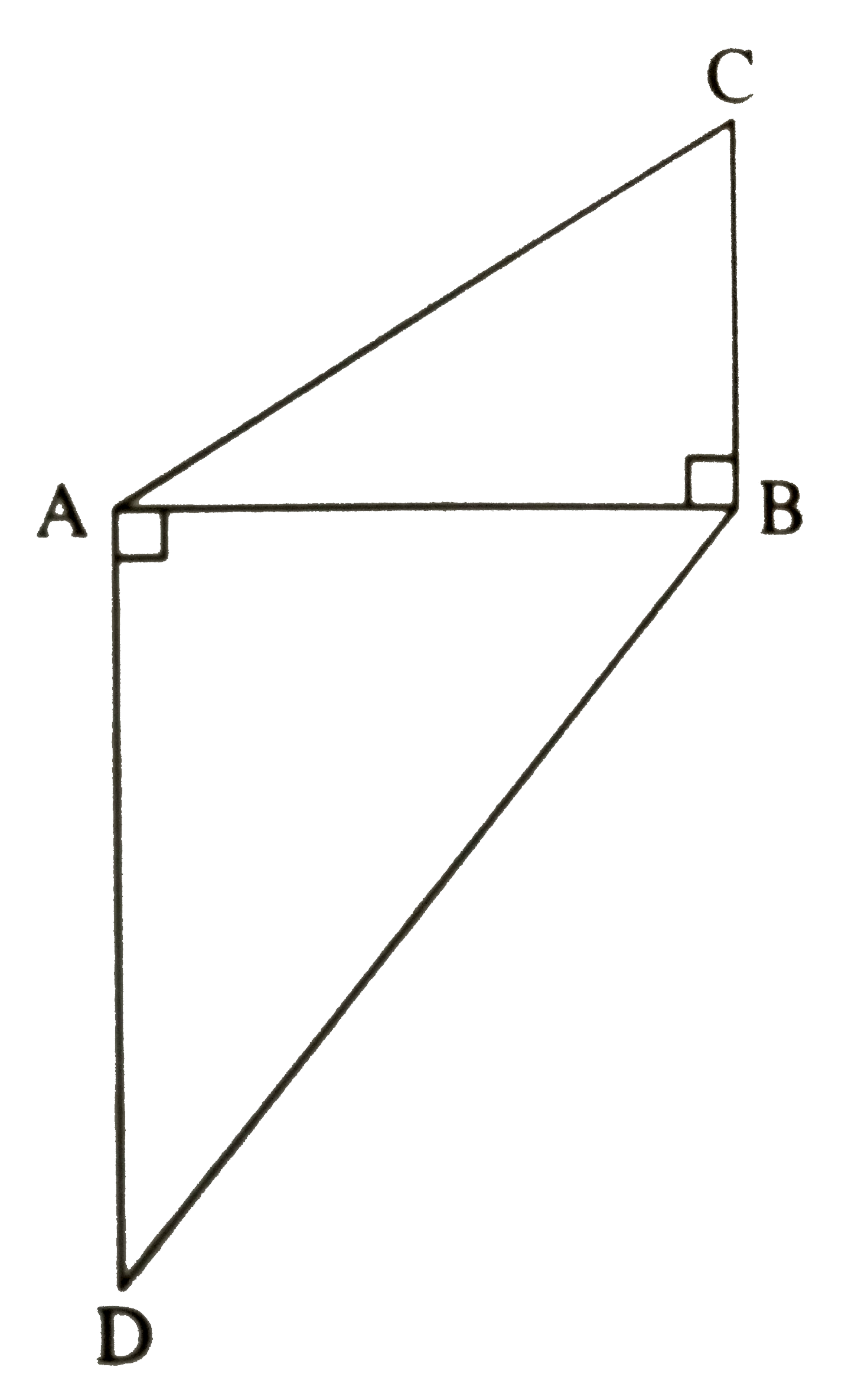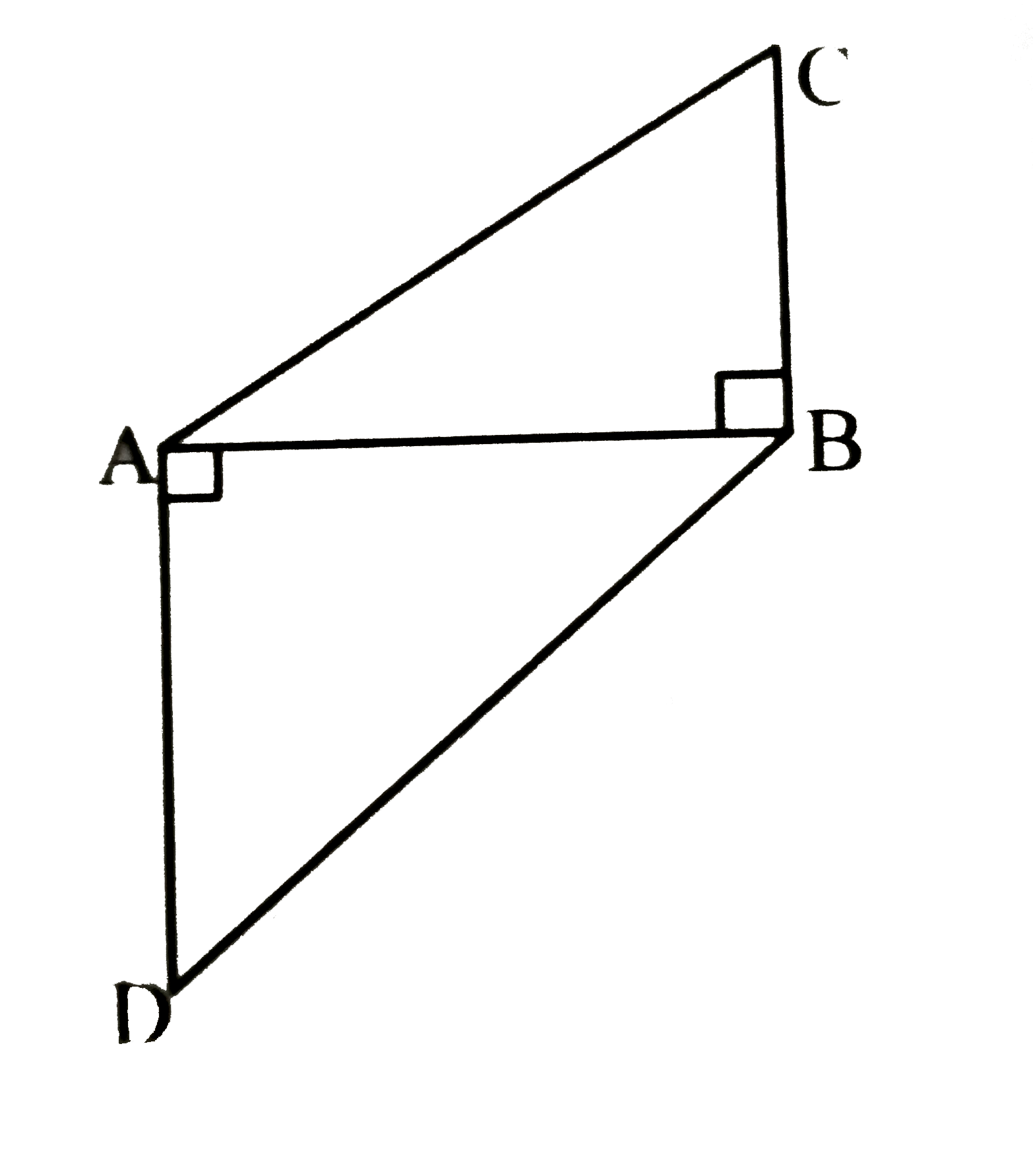In the figure BC⊥AB,AD⊥AB,BC=4,AD=8, then find A(ΔABC)A(ΔADB).

Video Solution
Text Solution
BC=4, AD=8 ….. (Given)
ΔABC and ΔADB have same base AB.
Areas of triangles with same base are proportional to their corresponding heights.
∴A(ΔABC)A(ΔADB)=BCAD
∴A(ΔABC)A(ΔADB)=48 ∴A(ΔABC)A(ΔADB)=12
|
Topper's Solved these Questions
- SIMILARITYBook:NAVNEET PUBLICATION - MAHARASHTRA BOARDChapter:SIMILARITYExercise:2.4 (3 mark each)
Explore 8 Videos
- SIMILARITYBook:NAVNEET PUBLICATION - MAHARASHTRA BOARDChapter:SIMILARITYExercise:2.5 (4 mark each)
Explore 3 Videos
- SIMILARITYBook:NAVNEET PUBLICATION - MAHARASHTRA BOARDChapter:SIMILARITYExercise:2.2 (1 mark each)
Explore 5 Videos
- QUADRATIC EQUATIONS Book:NAVNEET PUBLICATION - MAHARASHTRA BOARDChapter:QUADRATIC EQUATIONS Exercise:ASSIGNEMENT 2.4
Explore 8 Videos
- STATISTICSBook:NAVNEET PUBLICATION - MAHARASHTRA BOARDChapter:STATISTICSExercise:EXAMPLES FOR PRACTICE (MCQs)
Explore 35 Videos
Similar Questions
In the adjoining figure, BC⊥AB,AD⊥AB,BC=4,AD=8, then find A(ΔABC)A(ΔADB)..

View SolutionIn the following figure AP⊥BC,AD∣∣BC, then find A(ΔABC):A(ΔBCD).

View SolutionIn the adjoining figure, PQ⊥BC,AD⊥BC, then find ratio
A(ΔABC)A(ΔADC).
View SolutionIn the adjoining figure, PQ⊥BC,AD⊥BC, then find ratio
A(ΔPBC)A(ΔABC).
View SolutionIn the adjoining figure, AP⊥BC,AD||BC, then find A(ΔABC):A(ΔBCD).

View SolutionIn the following figure, seg AB⊥seg BC, seg DC⊥seg BC.
If AB = 2 and DC = 3, find A(ΔABC)A(ΔDCB).

View SolutionIn figure DE∣∣BC,andAD=12AB. IF BC=4.5cm, find DE.

View SolutionIn the given figure, AD = DC & AB = BC, then prove that ΔABD≅ΔCBD.

View SolutionIn the figure if AB || CD and AD||BC, find ∠Aand∠D

View SolutionIn the above figure, BC=acm,AB=ccm,AD=bcm. Find EC.
View Solution

